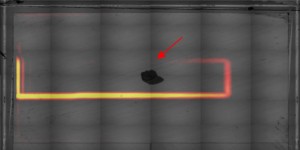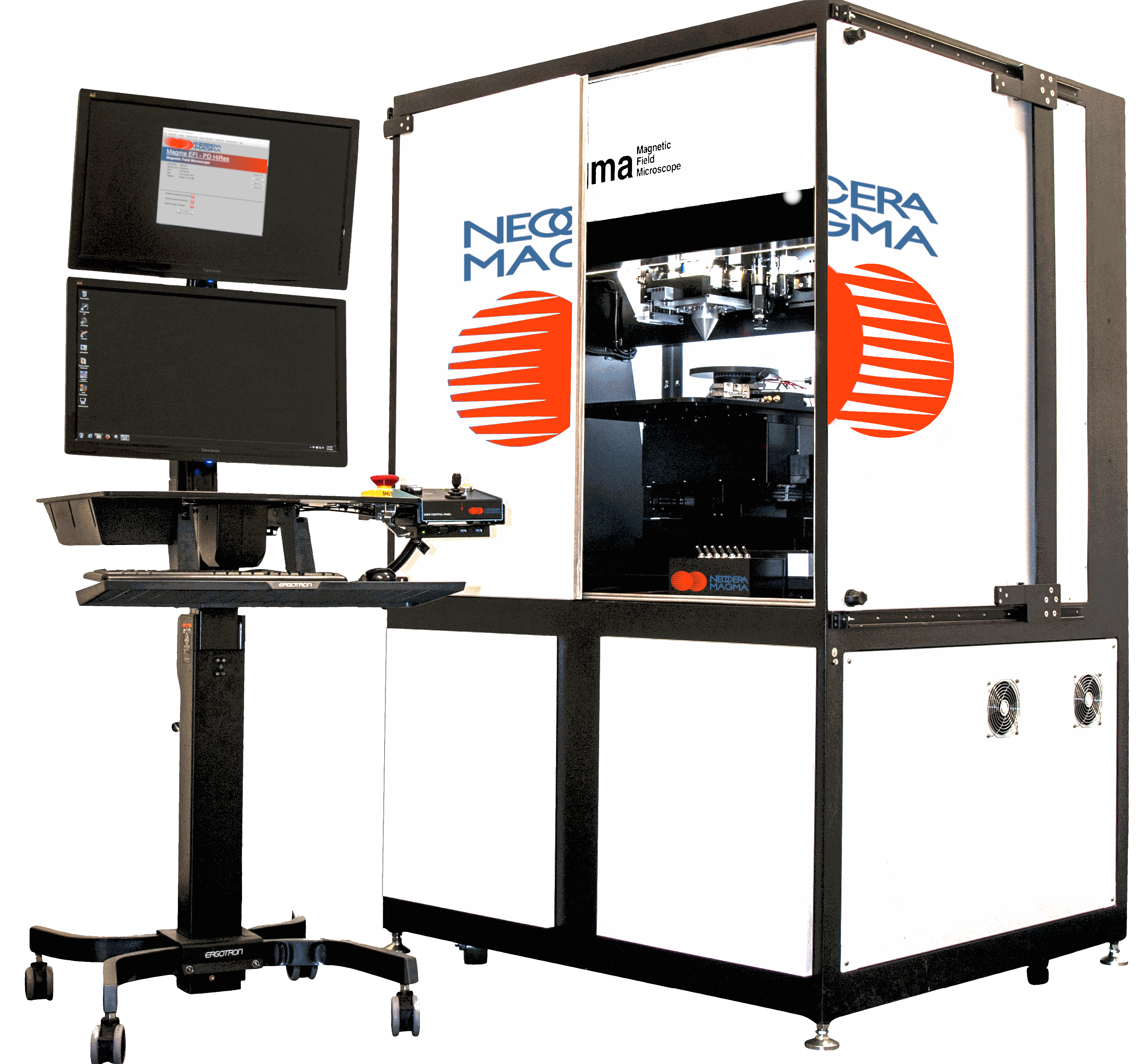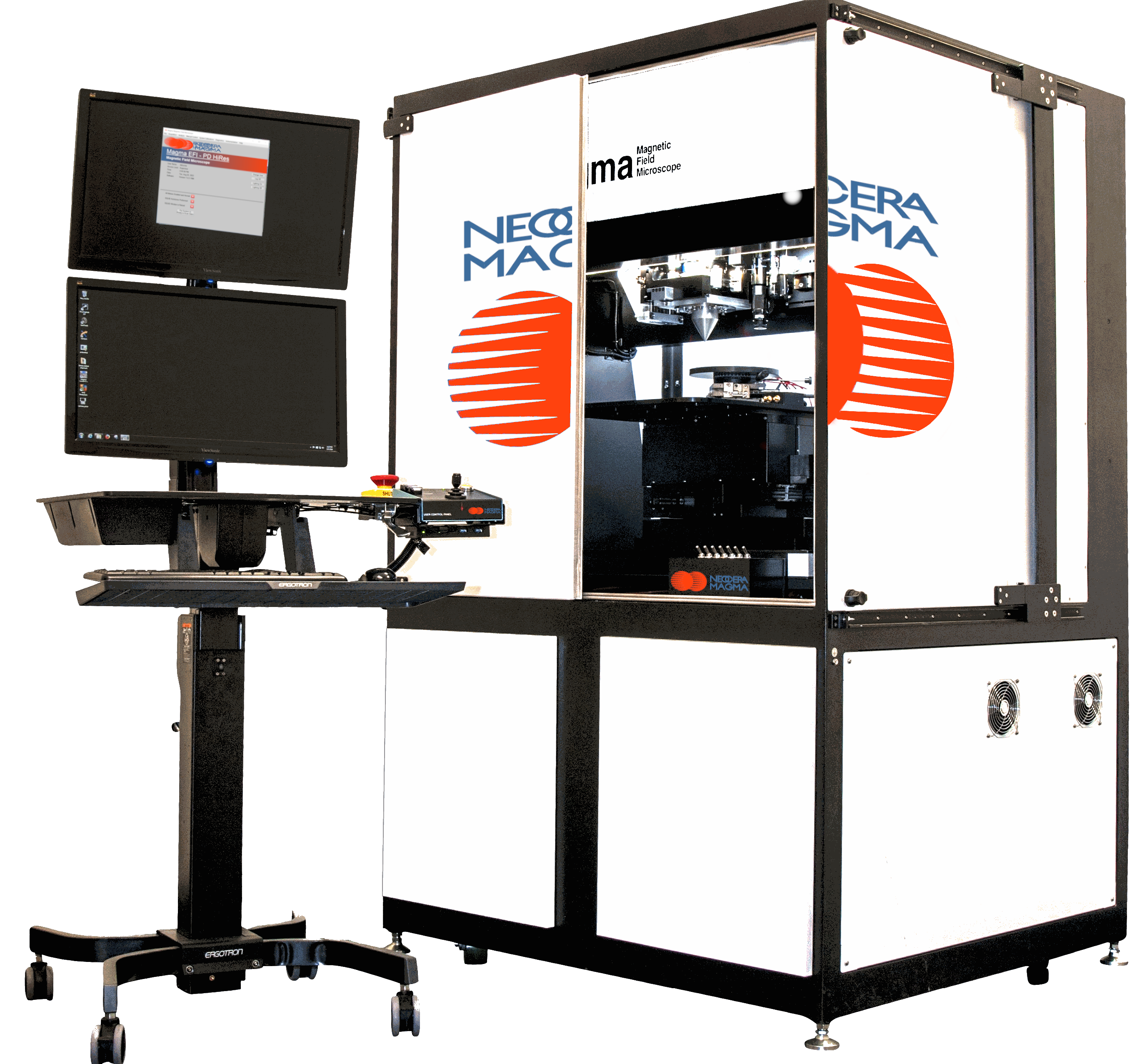Magma EFI HiRes
Images of
Cost-Effective localization of leakages, shorts and opens in dies, device packages and PC boards

The Magma Electronic Fault Isolation (EFI) HiRes system is ultimate tool for detecting all types of static defects (shorts, leakages, high resistance opens and dead opens) at the die, package or PC board level. The Magma EFI HiRes tool combines the capabilities of two sensors to achieve unparalleled sensitivity and sub micron resolution. This allows for a single system that can handle any type of device and any type of static defect.
Full Capabilities
- Magma EFI HiRes Microscope addresses all static defects: shorts, leakages, and opens.
- 3D defect localization calculates the distance from the surface of the sample to the current path when a straight current trace is available with new software able to recreate the current path in all three dimensions.
- Package shorts are a natural fit for SQUID in Magma microscopes since magnetic fields permeate all materials, e.g. power and ground planes, silicon, molding compounds, etc.
- Die shorts are located using the HiRes sensor with better than 500nm spatial resolution. Magnetic field resolution is not limited by wavelength, but only by sensor size and scanning distance.
- Leakages with mega-ohm resistance can be found with 500nA current sensitivity. Typical failures like electromigration and dendrite formation, where high current/high voltage can heal the sample, are readily solvable with Magma microscopes.
- Open failures are found using a space domain reflectometry (SDR) technique that applies a high frequency signal (20MHz to 200MHz) while detecting the RF magnetic field generated by the current. Using this technique on SOC packages with stacked die, TSVs and interposers, open failures in the silicon devices can be localized.
- The Magma EFI HiRes comes allows for opens capabilities to be extended to one or both sensors.

Contact Neocera Magma or your local sales representative for more information.
Feature
Details
SQUID
Short Defect Localization (SQUID)
3um
Spatial Resolution (SQUID)
2um
Total Scanning Area (SQUID)
At least 100mm by 100mm
Current Sensitivity (SQUID)
Magnetic Sensitivity (SQUID)
15 pT/√Hz Typical
Imaging Depth (SQUID)
10mm
Operating Frequency (SQUID)
DC to 25kHz
HiRes Sensor
Short Defect Localization (HiRes)
250nm
Spatial Resolution (HiRes)
500nm
Total Scanning Area (HiRes)
At least 100mm by 100mm
Current Sensitivity (HiRes)
Magnetic Sensitivity (HiRes)
10nT/√Hz Typical
Operating Frequency (HiRes)
10kHz to 200kHz
Imaging Depth (HiRes)
<100um
Opens
Opens Defect Localization (SDR)
30um
Imaging Depth (Opens, HiRes)
<100um
Imaging Depth (Opens, SQUID)
<500um
Operating Frequency (Opens)
20MHz to 200MHz
General
IF Function Generator
±10V @ 100mA
IF Function Generator Frequency
DC to 200kHz
Camera Resolution
2um (in NIR or Visible)
System Power
System Operating System
Windows 10 64-bit


